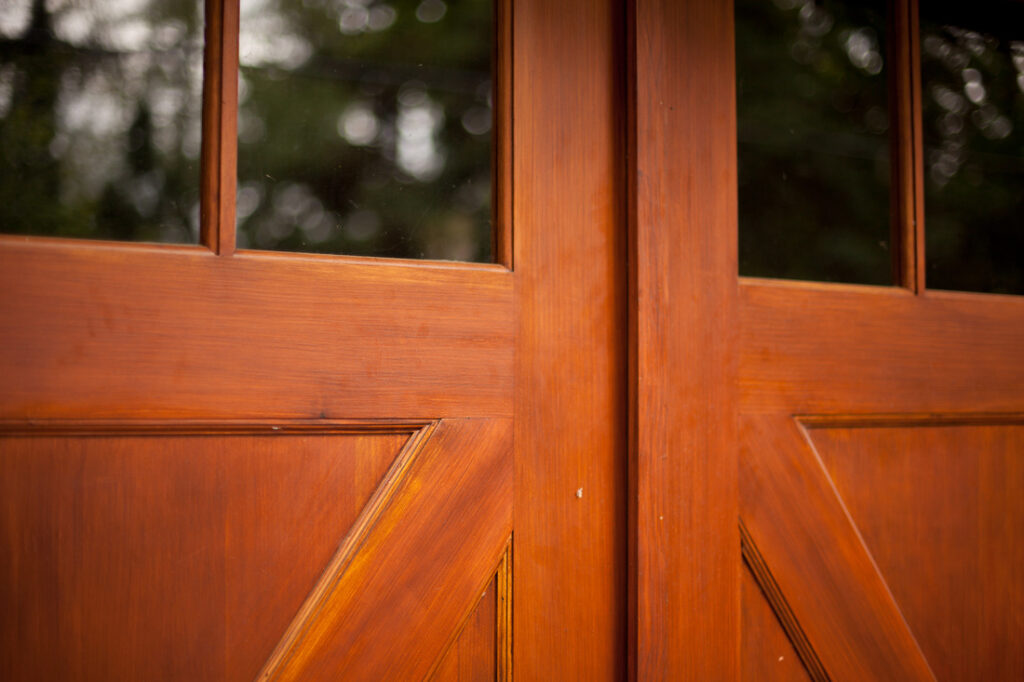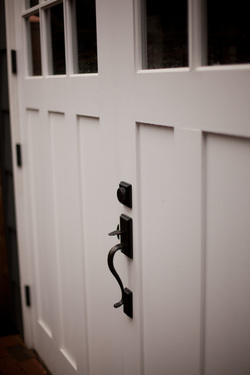
So what is an authentic carriage door?
For one thing, true carriage doors swing out, so they’re not the same thing as the overhead doors found on most of today’s garages. Carriage doors also should not be confused with barn doors, which are built with simple board-and-batten joinery.
The easiest way to describe a traditional & authentic carriage door is that it’s a lot like your front door–just bigger, and there are generally two of them per opening.
Genuine carriage doors are built using frame-and-panel construction. The stiles and rails (a.k.a. the frames) are generally made from an 1 3/4″ thick clear vertical grain wood that’s been kiln-dried and selected for its straightness. The orientation of the wood grain is a critical factor in limiting water absorption and door swelling. These framing members of carriage doors are connected with durable and secure mortise-and-tenon joinery.
The panels of traditional carriage doors can be made from either 3/4″- or 1″-thick solid wood. Marine-grade plywoods that have been engineered to withstand even the most severe weather conditions also can used for carriage door panels.
A few other traits distinguish authentic carriage doors from other styles of barn style doors. As already mentioned, carriage doors are designed to swing out — freeing up the interior space of a garage, studio ADU or other structure. And the solid manner of their construction allows carriage doors to hang on butt hinges that are mortised into the doors and into the jambs.
The use of these butt hinges gives carriage doors an unparalleled level of precision in their operation, translating into significant advantages over other styles of doors. Their close fit means carriage doors can use standard handlesets and locks, as opposed to gate hardware. The snug fit also means carriage doors are a breeze to seal from the weather.
So next time you see a product is labelled a “carriage door,” make sure it’s the real thing.
